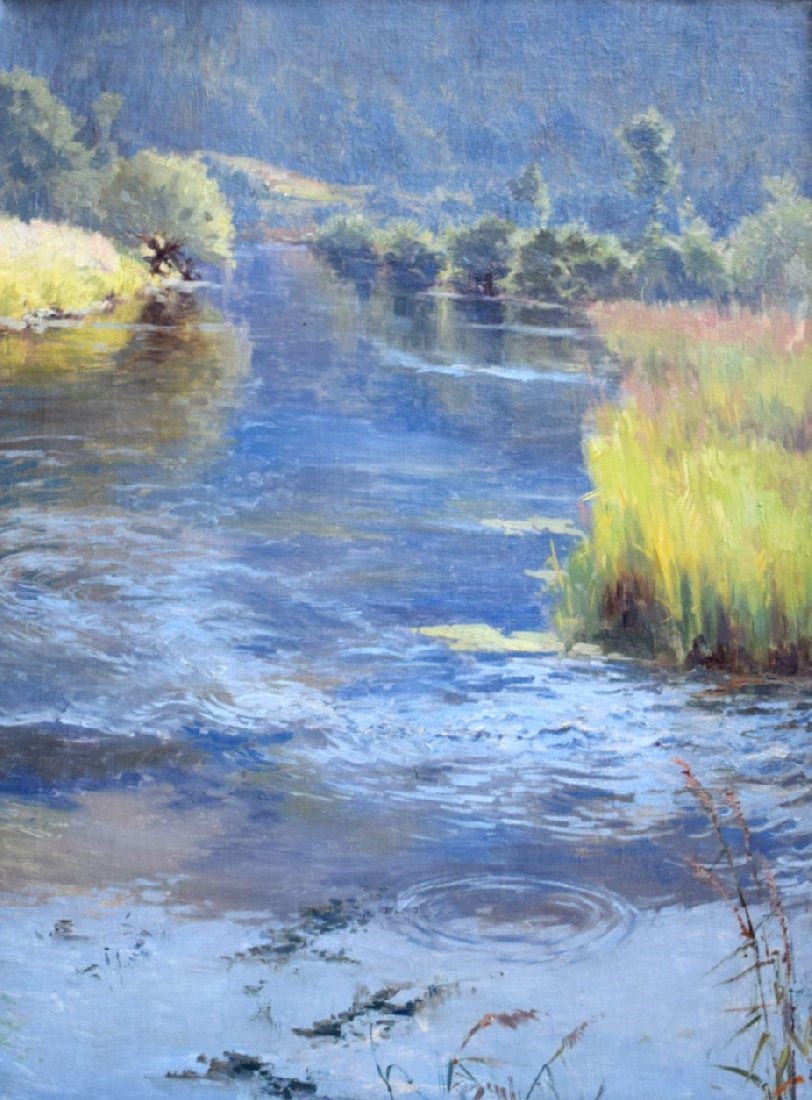Description:
Pierre Waidmann (1860-1937) was a French painter and sculptor. He also designed applied art. Hence, in addition to his paintings, his works in the field of crafts, including furniture and ceramics, occupy an important place. In the 1880s, he studied landscape painting under Louis Français in Paris. At the same time, he practiced in the studio of Fernand Humbert. He then trained with Henri Gervex and Alfred Roll. He perfected his skills in portraiture, still life and genre scenes. Nature and landscape will be referred to in all his works. The eminent French critic Léon Roger-Milès emphasizes that in Pierre Waidmann’s works, the most important thing is the nature and harmony of the lines and colors that capture it.
The painter was a member of the Société des Artistes Français. At the salons, he exhibited a total of around 200 paintings. The themes of a significant part of these were related to the Vosges*. The presentation of spring in the Vosges appeared on his debut work presented at the Salon in 1879 – a faience plate. The first painting by Pierre Waidmann, executed in oil technique had to wait until 1886*.
Description of the picture:
Wogezy is one of the French departments located in Lorraine. It owes its name to the mountain ranges passing through the town – Fr. Vosges. They are densely forested, mainly with fir and spruce forests. The strong emotional bond connecting the hunter with this place dates back to his childhood. He was born and raised here. In Wogezy, more precisely in Remiremont, his beloved grandfather, a collector Charles Friry, also lived. And it was here that the artist decided to open his workshop in 1884.
On the painting purchased by Edward Alexander in Paris, between 1905 and 1914, a river flowing through the Vogeses was depicted. The viewer fully indulges in the mood of the captured moment. On a sunny, probably early autumn day, the artist takes us to the banks of a small and peaceful river. In the water mirror, the surrounding hills are reflected. They are covered with patches of greening tops of coniferous trees in the distance. The banks of the river are adorned with golden grass and reeds, shimmering in the sunshine. The radiance emanating from the work magnifies the blurring of the contours of the vegetation, which merge into one bright color spot. It is complemented by the shimmering color of the river current, with an ideally smooth surface in the depths of the representation and a slightly more agitated tone as it approaches the foreground. Here it is broken by the lines outlining the land subsidence, the riverbed, on its surface. Closest to the viewer, just by the tall grass, water circles were painted, which signal the presence and movement of fish.
Waidmann fully captures in his work the harmony of shapes, colors and sounds. The air on the painting stands still. Even the reeds don’t tremble, undisturbed by gusts of light wind. The captured silence on the painting allows the imagination to hear the gentle murmur of flowing water.


